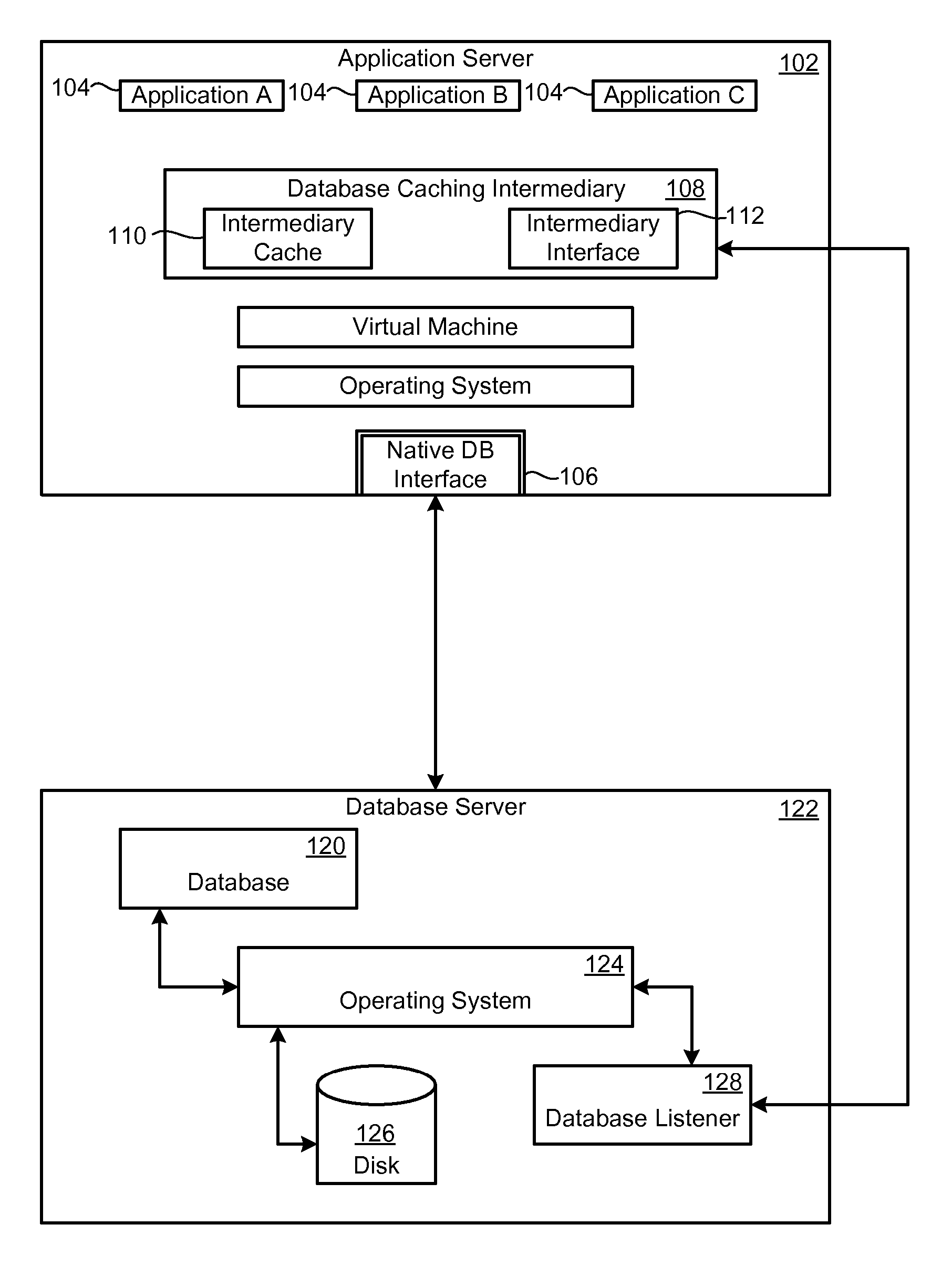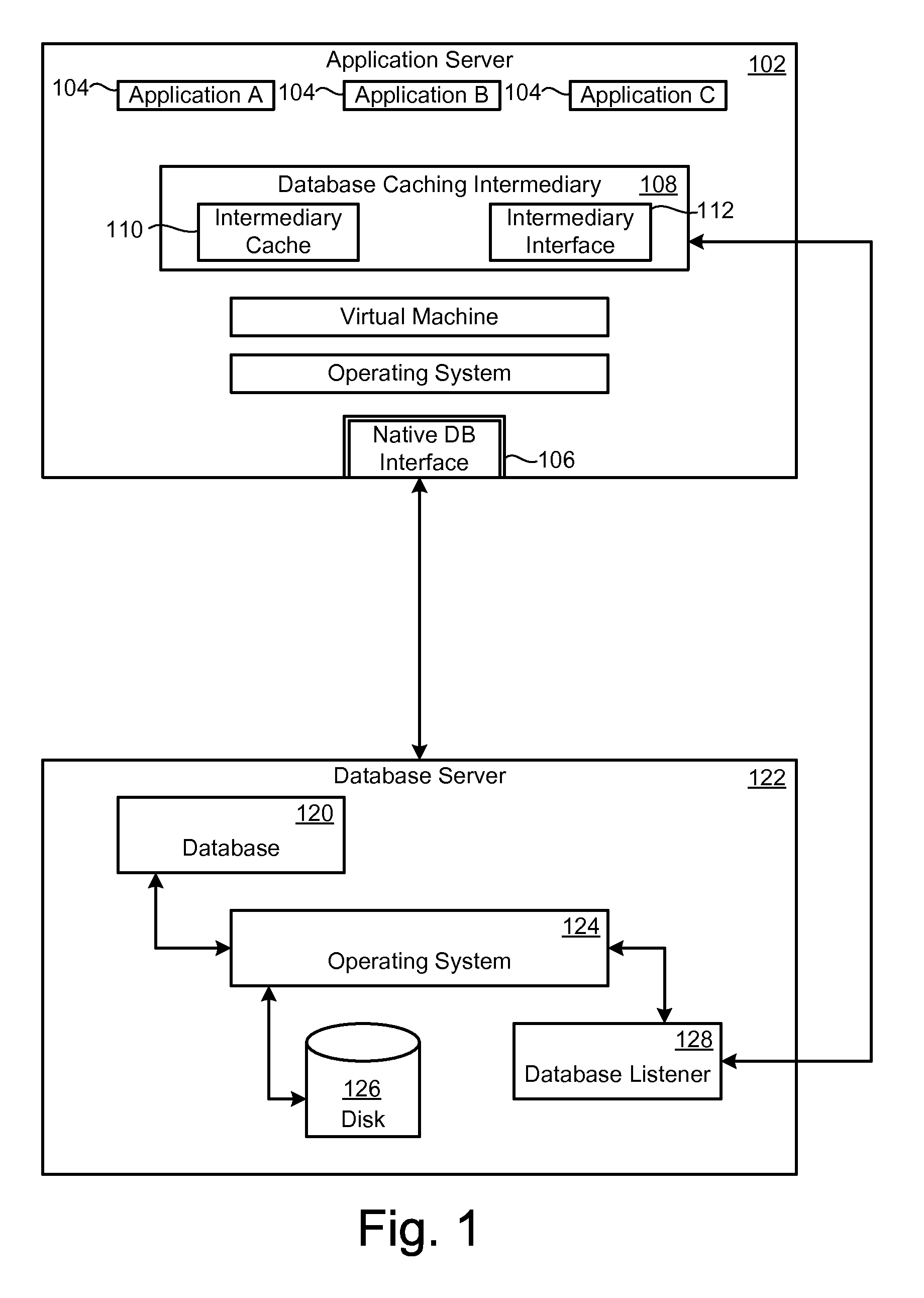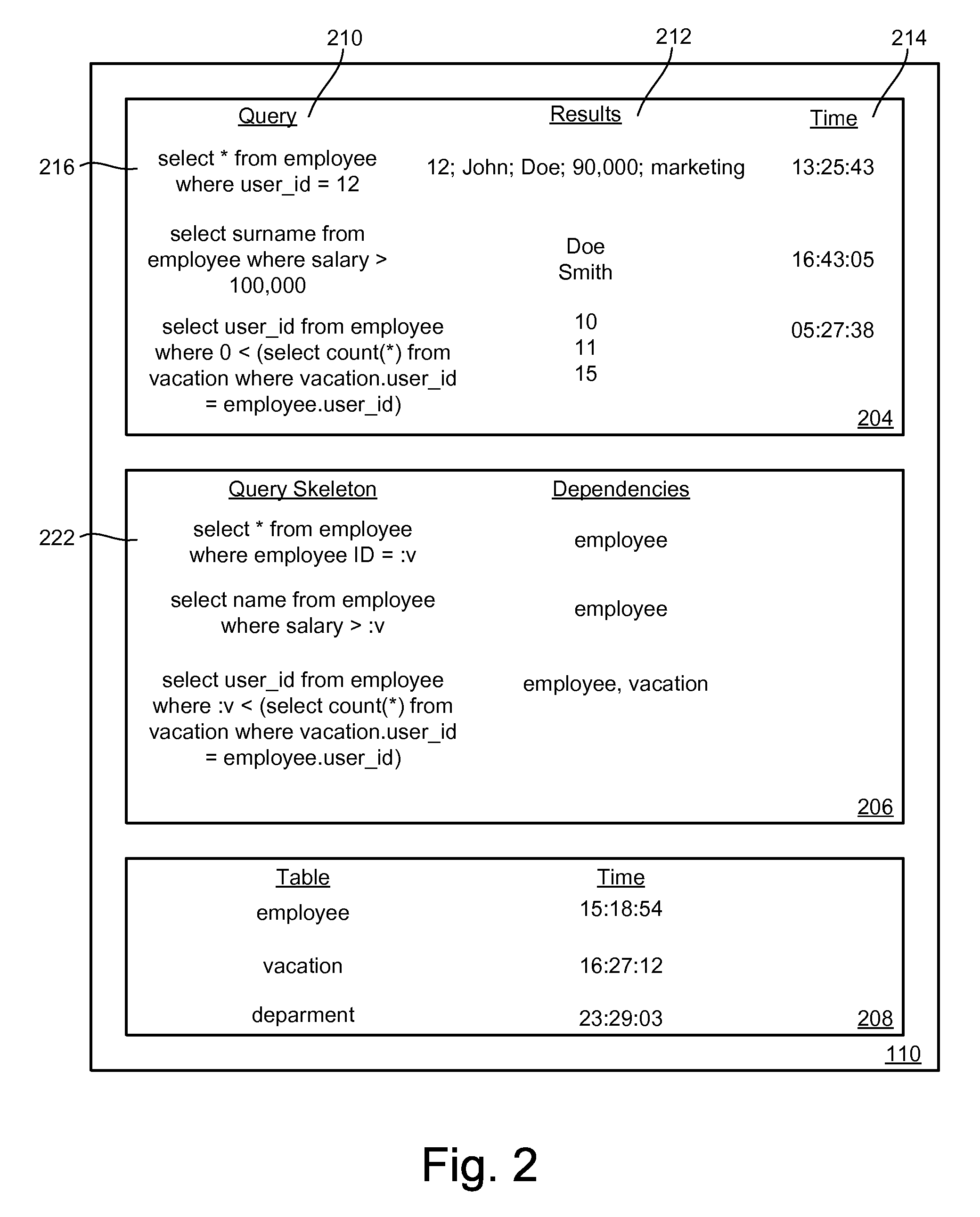Database Caching and Invalidation Based on Detected Database Updates
a database and database technology, applied in the field of database caching and invalidation based on detected database updates, can solve the problems of increasing performance, affecting the ultimate purpose of the application, and increasing the complexity of the operations performed by and submitted to databases, so as to achieve the effect of preparing to determine dependency information
- Summary
- Abstract
- Description
- Claims
- Application Information
AI Technical Summary
Benefits of technology
Problems solved by technology
Method used
Image
Examples
Embodiment Construction
[0030] Database Caching Intermediary
[0031]FIG. 1 is a block diagram depicting one embodiment of the technology described herein executing in an application server—database server environment. FIG. 1 depicts an application server 102 and database server 122. A variety of applications 104 can be hosted and executed upon application server 102. Applications 104 can be implemented in any suitable language, including but not limited to the Java™ programming language, C++, etc. The application servers on which applications 104 are executed will vary by embodiment, but can support such platforms as the Java™ 2 Platform, Enterprise Edition (J2EE) Platform.
[0032] In one embodiment, servers, processing systems, and other processor based devices as described can include, by way of non-limiting example, one or more processors capable of executing instructions provided on processor-readable media to perform the methods and tasks described herein. The processing system may include a volatile me...
PUM
 Login to View More
Login to View More Abstract
Description
Claims
Application Information
 Login to View More
Login to View More - R&D
- Intellectual Property
- Life Sciences
- Materials
- Tech Scout
- Unparalleled Data Quality
- Higher Quality Content
- 60% Fewer Hallucinations
Browse by: Latest US Patents, China's latest patents, Technical Efficacy Thesaurus, Application Domain, Technology Topic, Popular Technical Reports.
© 2025 PatSnap. All rights reserved.Legal|Privacy policy|Modern Slavery Act Transparency Statement|Sitemap|About US| Contact US: help@patsnap.com



